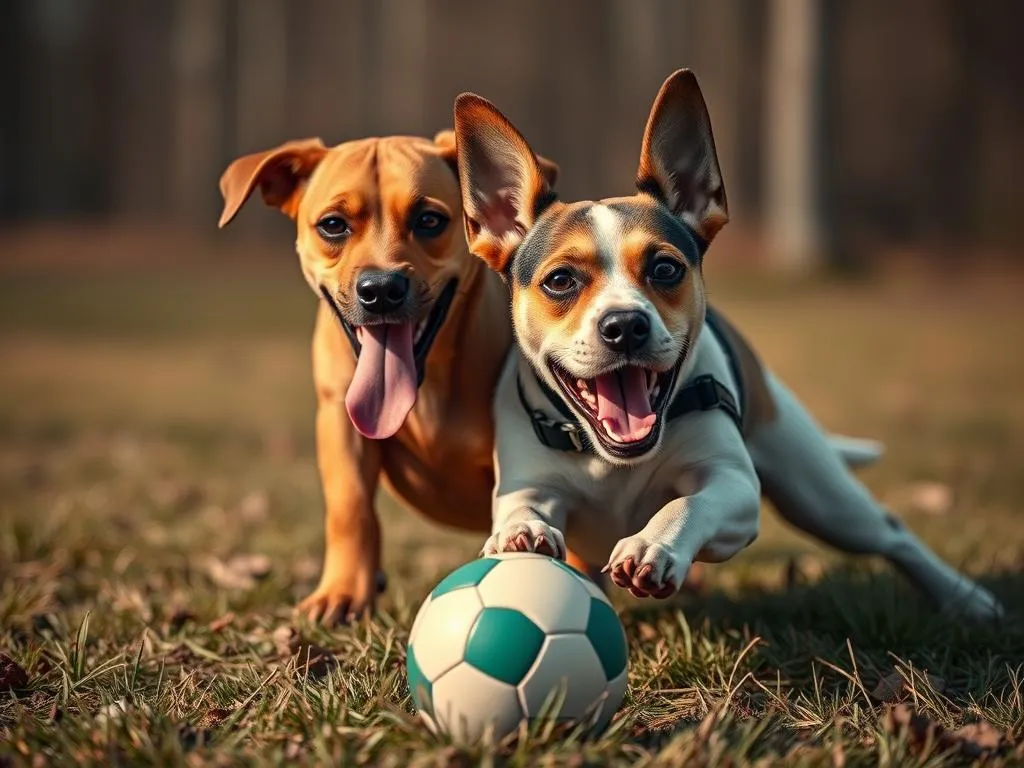
Introduction
Play is an essential component of a dog’s overall well-being, serving not just as a means of exercise but also as a way to engage their mental faculties. Regular playtime can lead to a healthier, happier dog, reducing behavioral issues and promoting social skills. Among the various activities available to dogs, ball games for dogs stand out as a favorite. Dogs inherently love to chase, retrieve, and chew on balls, making them an ideal tool for playtime.
Different types of balls cater to various play styles and preferences, from standard rubber balls to interactive treat-dispensing toys. This article delves into a variety of ball games for dogs, exploring their benefits and providing practical tips for implementation.
Understanding Your Dog’s Play Behavior
The Role of Play in a Dog’s Life
Play is not merely a fun activity; it plays a critical role in a dog’s life by facilitating social interaction and providing stress relief. Engaging in play helps dogs develop essential skills such as coordination, problem-solving, and communication with other dogs.
Identifying Your Dog’s Play Style
Not all dogs play the same way. Some dogs prefer active play, while others may lean towards passive forms. Additionally, dogs may enjoy solitary play or thrive in a social setting. Understanding your dog’s individual play style will enhance their enjoyment during playtime and ensure that you choose the right ball games for dogs.
Choosing the Right Ball for Your Dog
Types of Balls for Dogs
When it comes to ball games for dogs, the choice of ball can significantly influence the experience:
- Standard Rubber Balls: Durable and bouncy, these are perfect for fetch.
- Squeaky Balls: Many dogs are attracted to the noise, making these balls great for interactive play.
- Tennis Balls: Soft yet sturdy, tennis balls are a classic but can wear down a dog’s teeth over time.
- Interactive Balls: Treat-dispensing balls engage your dog mentally and physically, promoting problem-solving skills.
Factors to Consider
When selecting a ball, consider the following:
- Size and Weight: Ensure the ball is appropriate for your dog’s breed and size to prevent choking hazards.
- Durability and Safety: Look for balls that can withstand heavy chewing and rough play.
- Material: Opt for non-toxic, chew-resistant materials to keep your dog safe during play.
Popular Ball Games for Dogs
Fetch
Fetch is the quintessential dog game. It involves throwing a ball for your dog to chase and retrieve. Teaching your dog to fetch can be straightforward:
- Start Small: Use a ball your dog is already interested in.
- Encourage the Chase: Throw the ball a short distance and encourage your dog to go after it.
- Reward: Praise your dog when they bring the ball back, reinforcing the behavior.
To make fetch more engaging, try varying the type of ball, changing the throwing distance, or introducing other toys during the game.
Tug-of-War with a Ball
Tug-of-war can also be an exciting variation when combined with a ball. This game not only strengthens your bond with your dog but also provides a good workout.
When playing tug-of-war, keep these safety tips in mind:
- Set Boundaries: Teach your dog to release the ball when asked.
- Watch for Overexertion: If your dog appears tired or disinterested, give them a break.
- Incorporating Fetch: After a good tug session, toss the ball for a game of fetch to keep things dynamic.
Ball Toss
Ball toss is another engaging game that differs from fetch. Instead of a long throw, toss the ball gently to encourage your dog to leap and catch it.
To enhance this game:
- Use Different Balls: Experiment with various types of balls to see which one excites your dog the most.
- Vary the Tossing Techniques: Try underhand throws, overhand throws, or bouncing the ball to change the dynamics.
Hide and Seek with Balls
Hide and seek can add an enriching twist to ball games. Begin by hiding the ball in an area your dog can access.
The steps are simple:
- Show the Ball: Let your dog see you hide the ball.
- Encourage Searching: Use commands like “find it” to prompt your dog to look for the ball.
- Celebrate the Find: When your dog discovers the ball, reward them with praise or a treat.
This game not only involves physical activity but also offers significant mental stimulation, enhancing your dog’s problem-solving skills.
Advanced Ball Games and Training
Agility Exercises with Balls
Incorporating balls into agility exercises can provide a fun workout for both you and your dog. Set up an agility course in your backyard, utilizing balls as obstacles or targets.
Some recommended drills include:
- Ball Weave: Set up balls in a line and encourage your dog to weave through them.
- Ball Jumping: Teach your dog to jump over balls placed on the ground.
- Retrieve Through Obstacles: Create a course where your dog must navigate around barriers to get to the ball.
Teaching Tricks with a Ball
Using balls as tools for training can introduce a variety of tricks. Some fun tricks to teach include:
- Rolling the Ball: Teach your dog to use their nose or paw to roll the ball back to you.
- Balancing: Encourage your dog to balance a ball on their nose or head.
- Passing: Show your dog how to pass the ball between their paws.
A step-by-step guide can help you through the training process. Start with simple commands and gradually progress to more complex tricks.
Group Games with Multiple Dogs
Organizing playdates can be a rewarding experience. Group games provide socialization opportunities and encourage healthy competition among dogs.
When planning group ball games:
- Supervise Closely: Ensure all dogs are playing safely and comfortably.
- Choose Games Wisely: Opt for games that allow all dogs to participate, such as relay races or team fetch.
- Observe Behavior: Watch for signs of stress or aggression, and be prepared to step in if necessary.
Safety Considerations for Dog Ball Games
Supervision during Play
Monitoring your dog’s playtime is crucial. Always keep an eye on them to ensure they are safe and enjoying themselves. Look for signs of overexertion, such as excessive panting or reluctance to continue.
Choosing Safe Play Areas
Deciding where to play is also important.
- Indoor vs. Outdoor: Indoor play can be more controlled, while outdoor spaces allow for greater freedom.
- Hazard-Free Zones: Ensure the area is free from sharp objects, toxic plants, or other hazards that could harm your dog during play.
Regular Health Checks
Maintaining your dog’s health is vital. Regular veterinary check-ups can identify any potential issues before they become serious. Pay attention to your dog’s dental health, as certain ball materials can wear down teeth over time.
Conclusion
Engaging in ball games for dogs offers countless benefits, from physical exercise to mental stimulation. These games not only keep your dog fit but also strengthen the bond between you and your furry friend. Experimenting with various games and types of balls can lead to endless fun and learning.
Encouraging a playful environment fosters happiness and well-being in dogs. With the right approach and careful consideration, you can ensure that playtime is a rewarding experience for both you and your dog. So, grab a ball and get ready for some tail-wagging fun!









